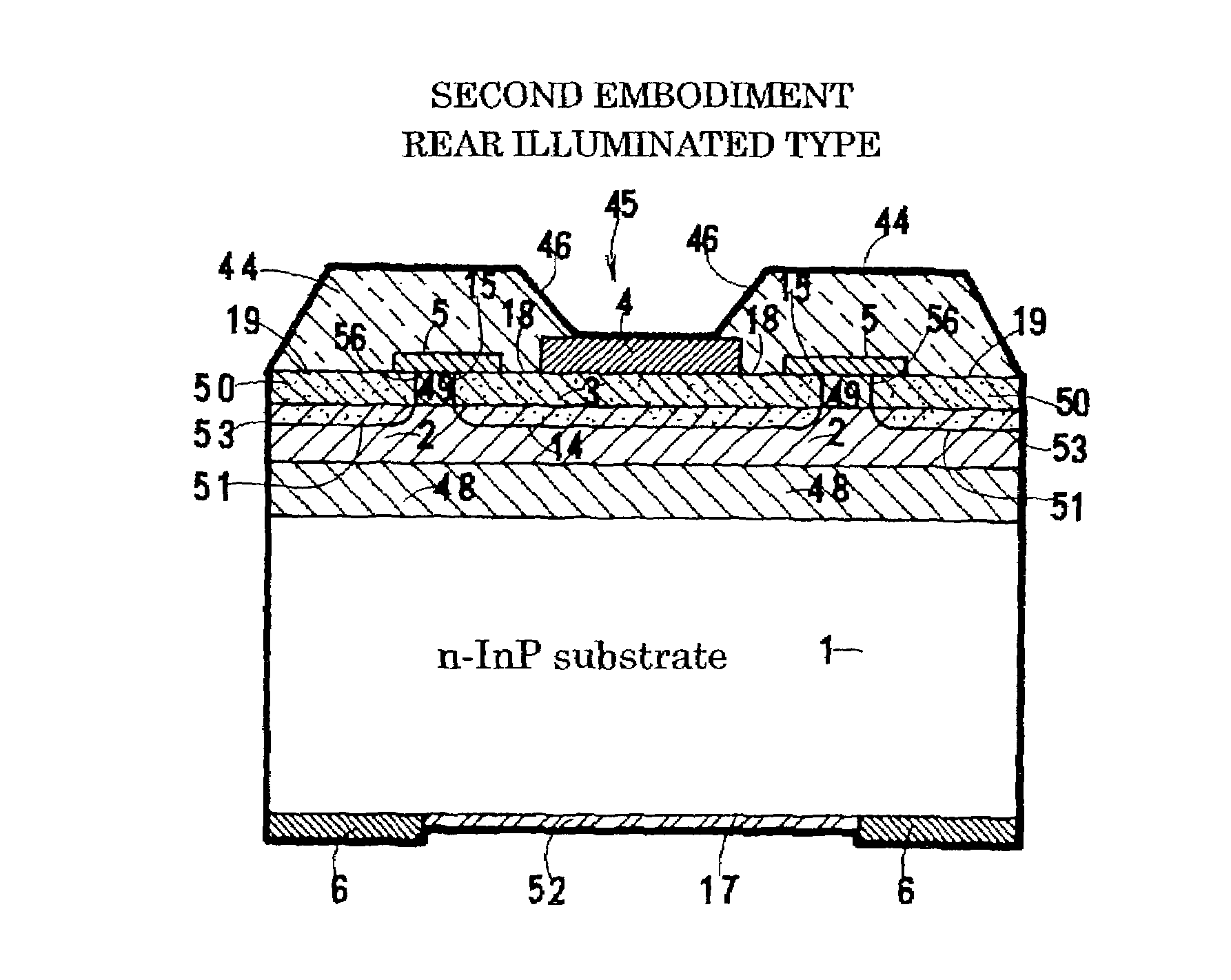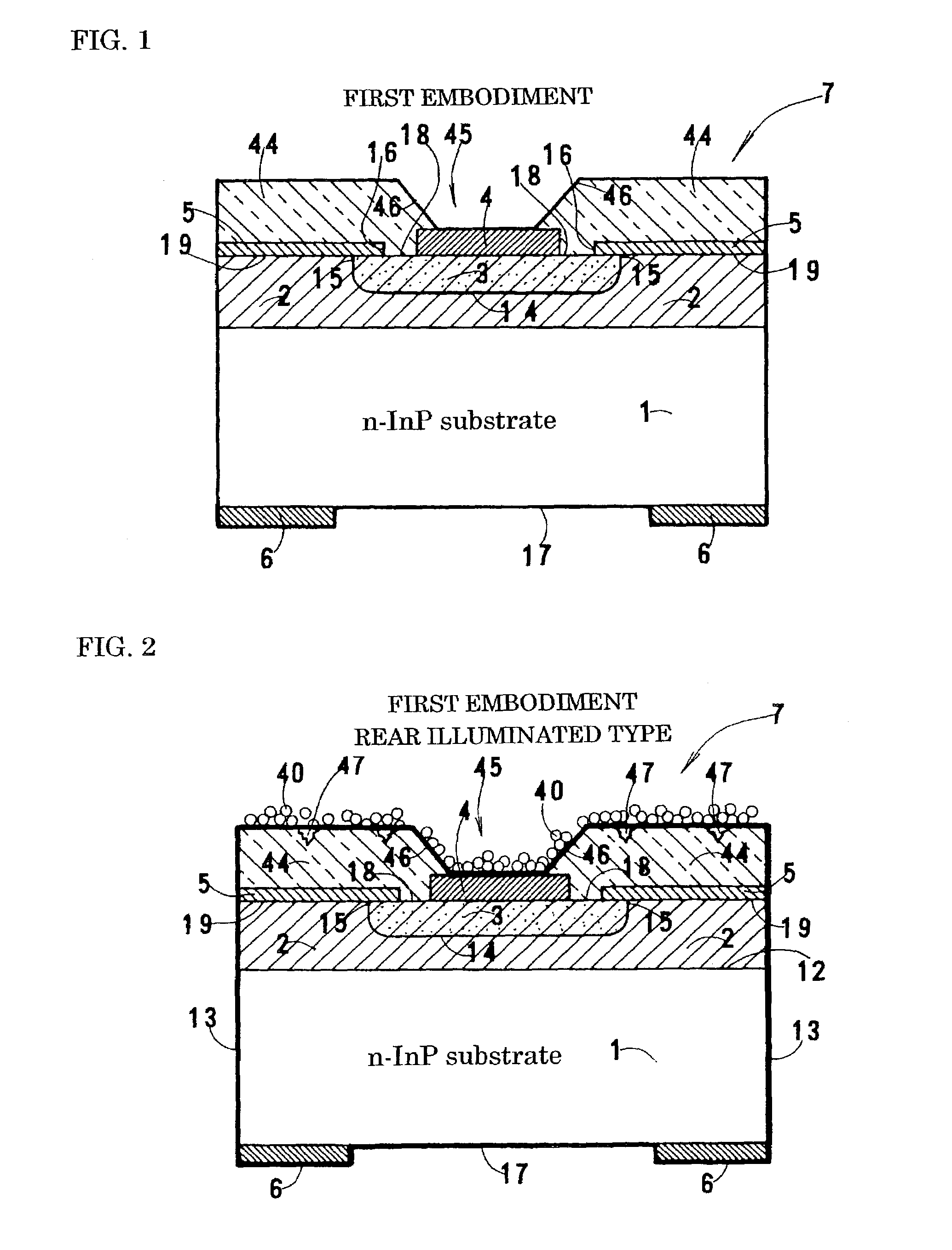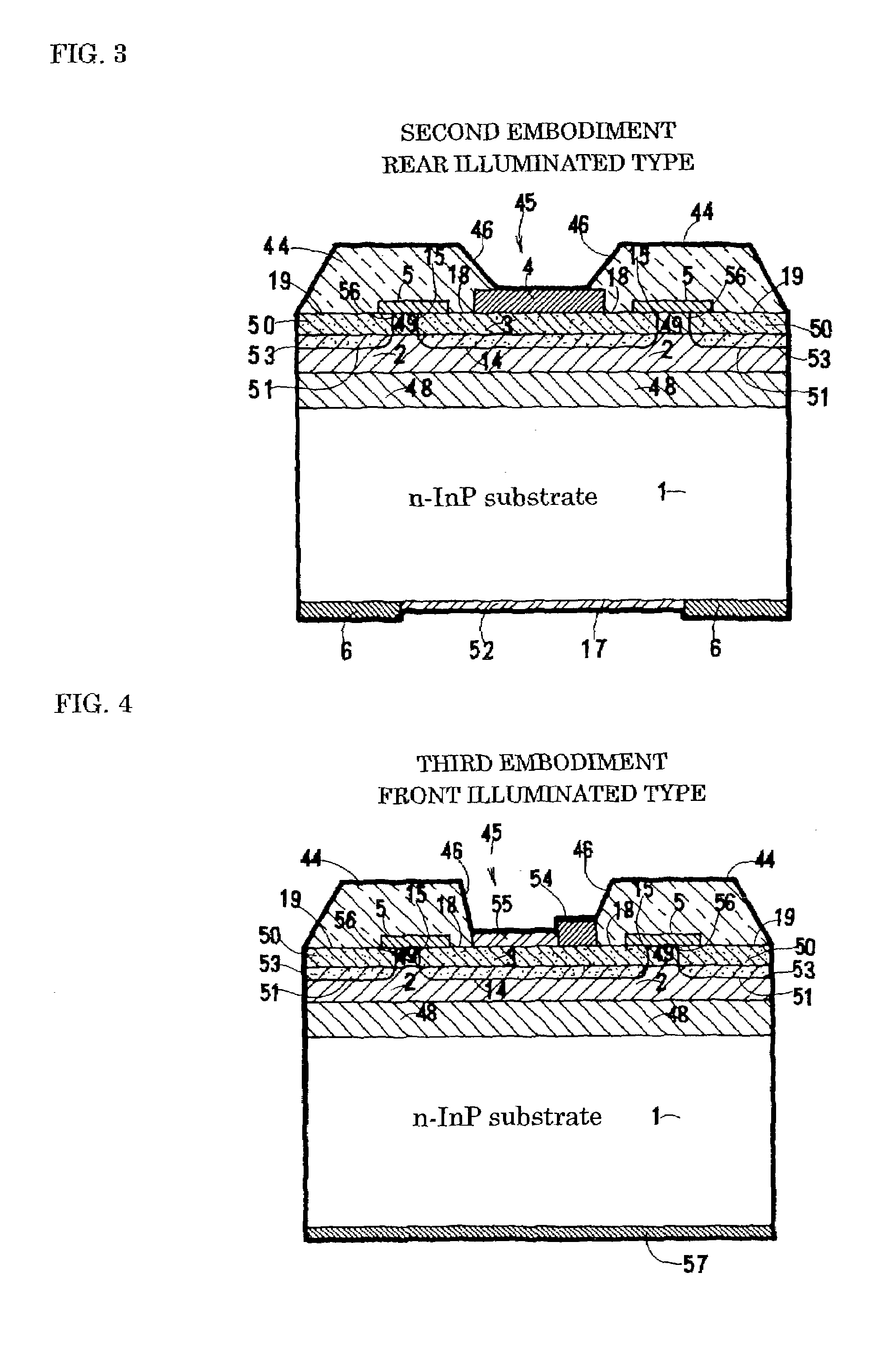Photodiode, optical receiver device including the same, and method of making the photodiode
- Summary
- Abstract
- Description
- Claims
- Application Information
AI Technical Summary
Benefits of technology
Problems solved by technology
Method used
Image
Examples
first embodiment (rear illuminated type pd : figs.1 and 2)
FIRST EMBODIMENT (REAR ILLUMINATED TYPE PD: FIGS. 1 AND 2)
[0073]FIG. 1 is a cross-sectional view of a rear illuminated PD provided with a protective layer according to a first embodiment of the present invention. An n-InGaAs absorption layer 2 is deposited on an n-InP substrate 1 by epitaxial growth. The center of the n-InGaAs absorption layer 2 is a p-type region 3 formed by zinc diffusion. A dish-shaped p-n junction 14 is formed in the n-InGaAs absorption layer 2. A p-electrode 4 is formed on the center of the p-type region 3. The p-electrode 4 is made of a titanium / gold alloy. A passivation film 5 is formed on the peripheral region of the top face of the p-type region 3. The passivation film 5 also covers the peripheral regions 19 of the top face of the n-InGaAs absorption layer 2. The end 15 of the p-n junction is located under the passivation film 5 and away from the inner end 16 thereof. An annular n-electrode 6 is formed on the rear face (bottom face) of the n-InP substrate 1...
second embodiment (rear illuminated type pd : diffusion shielding layer , fig.3)
SECOND EMBODIMENT (REAR ILLUMINATED TYPE PD: DIFFUSION SHIELDING LAYER, FIG. 3)
[0082]FIG. 3 is a cross-sectional view of a rear illuminated PD provided with a protective layer and a diffusion shielding layer according to a second embodiment of the present invention. A cap layer and a buffer layer are provided in the crystal structure, and an annular p-type layer as the diffusion shielding layer is provided at the peripheral portion of the top face of the PD.
[0083]An n-InP buffer layer 48, an n-InGaAs absorption layer 2, and an n-InP cap layer 49 are deposited on an n-InP substrate 1 by epitaxial growth. The n-InP buffer layer 48 is deposited at a low temperature for improving the crystallinity of the n-InGaAs absorption layer 2. The n-InP cap layer 49 improves the ohmic contact between a p-type region and a p-electrode. The n-InP cap layer 49 is called a window layer for receiving light in a front illuminated type, although it is called a cap layer in a rear illuminated type since n...
third embodiment (front illuminated type pd : diffusion shielding layer and antireflective film , fig.4)
THIRD EMBODIMENT (FRONT ILLUMINATED TYPE PD: DIFFUSION SHIELDING LAYER AND ANTIREFLECTIVE FILM, FIG. 4)
[0095]The present invention is also applicable to a front illuminated photodiode. FIG. 4 is a cross-sectional view of a front illuminated photodiode having a protective layer and a diffusion shielding layer according to a third embodiment of the present invention. A small dot p-electrode is provided on the top face of the PD such that light enters the top face through the opening in the center of the top face, which is covered with an antireflective film. The rear face, on which light is not to be incident, is covered by an n-electrode. In this embodiment, the diffusion shielding layer and a window or cap layer are provided. The diffusion shielding layer and the window layer may be omitted.
[0096]An n-InP buffer layer 48, an n-InGaAs absorption layer 2, and an n-InP window or cap layer 49 are epitaxially deposited on an n-InP substrate 1. An annular passivation film 5 is formed on t...
PUM
 Login to View More
Login to View More Abstract
Description
Claims
Application Information
 Login to View More
Login to View More - Generate Ideas
- Intellectual Property
- Life Sciences
- Materials
- Tech Scout
- Unparalleled Data Quality
- Higher Quality Content
- 60% Fewer Hallucinations
Browse by: Latest US Patents, China's latest patents, Technical Efficacy Thesaurus, Application Domain, Technology Topic, Popular Technical Reports.
© 2025 PatSnap. All rights reserved.Legal|Privacy policy|Modern Slavery Act Transparency Statement|Sitemap|About US| Contact US: help@patsnap.com



